May Day in Germany, called Der Erste Mai or Tag der Arbeit, brings together old customs and modern ways of celebrating. It is not just a single event-instead, it marks the start of spring and highlights workers’ rights. Depending on where you are in Germany, you might see everything from traditional Maypole dances to big political marches. The day shows the many sides of German life and culture.

May Day in Germany is both a public holiday and a living mix of old and new influences. It combines pre-Christian rituals, Christian traditions, and the ongoing fight for better working conditions. The celebrations show both the importance of nature and the value Germans place on community and fairness. Whether you care about legends, history, or present-day issues, May Day in Germany is worth knowing about.
What is May Day in Germany?
May Day in Germany is a public holiday that mixes a long history with varied traditions. It both welcomes springtime and remembers the worldwide labor movement. This means you might see very different activities in different parts of the country, from cheerful festivals in small villages to large marches in big cities.
Germans often call the day Der Erste Mai (the first of May) or Tag der Arbeit (Labor Day). With almost everyone off work and school, people join in many different activities-showing how the holiday has deep roots and current meaning.
When is May Day celebrated?
May Day happens every year on May 1st. The date comes about halfway between the start of spring and the middle of summer, making it like the unofficial start of the warm season. In fact, many places begin the celebrations on the evening of April 30th, known as Walpurgis Night (Walpurgisnacht) or Witches’ Night (Hexennacht).
Because of this, May Day in Germany often lasts two days-nighttime parties followed by daytime events. The switch from April to May is seen as a big change from winter to spring and summer.
Why is May Day important in German culture?
May Day is important in Germany because it has many meanings. It started as a celebration of spring and new life, as shown in customs like the Maypole and dancing. But it also stands for the fight for better conditions for workers, including the eight-hour workday. This mix of old and new makes May Day in Germany a special time that focuses on both fun and serious issues.
Is May Day a public holiday in Germany?
Yes, May 1st is a public holiday everywhere in Germany. Most people do not work or go to school. Most stores, banks, and post offices are closed, though some bakeries and shops at travel centers stay open. This lets more people join in the celebrations, whether they are enjoying time with family or joining a march.
How did May Day celebrations start in Germany?
May Day in Germany has grown out of many sources, including old pagan customs, stories from the Middle Ages, and struggles by workers for fair treatment. Over time, these parts came together to make the holiday as it is now. That’s why May Day can feel like several celebrations-each with its own style and meaning.
Old and pagan origins of May Day
May Day started as a festival of new life and plenty-going back far before Christianity. People used to decorate their homes with green branches and flowers, often called “bringing in the May.” Farmers would plant crops and move animals to new pasture around this time. Over hundreds of years, many of these old customs changed but the idea of welcoming spring has stayed important.
Walpurgis Night (Walpurgisnacht)
The night before May Day, April 30th, is Walpurgis Night or Witches’ Night. People believed witches gathered on mountaintops, so villagers lit big bonfires and made noise to scare them off. Even though bonfires usually happen at Easter now, many Germans keep the tradition of “Tanz in den Mai” (Dancing into May), where young people celebrate and party all night on April 30th, especially in the Harz Mountains.

Influence of International Labour Day
May Day is also International Labour Day in Germany. After protests for better work conditions in Chicago in 1886, people around the world started to use May 1st to speak up for workers’ rights. It became a public holiday in Germany in 1933. Even today, marches, rallies, and speeches for workers’ issues are an important part of May Day, especially in big cities.
Traditional customs and symbols of May Day in Germany
May Day is full of traditions that help people celebrate the end of winter and the start of summer. Most of these customs bring people together in towns and villages to dance, sing, and enjoy food and drink. Many of these traditions continue to this day and show Germany’s rich cultural past.
What is the Maypole (Maibaum) and why is it important?
The Maypole (Maibaum) is one of the best-known signs of May Day in Germany. It’s a tall tree trunk, often pine or birch, decorated with colored ribbons and wreaths. Sometimes it has signs for local trades. In Bavaria, the Maypole is often blue and white. Setting up the Maypole is a community event that can take weeks to prepare. In some places, nearby villages even try to steal each other’s poles as a joke. The stolen pole must be “returned” after the losing village provides beer and food for the winners. The Maypole stands for the health and strength of the community.

Tanz in den Mai: Dancing into May
“Tanz in den Mai” means “Dance into May,” and happens on the night of April 30th. Many people go to clubs or parties to dance until morning. In some areas, especially where old customs hold on, people dress as witches or wear costumes. In big cities, it means nightlife and street parties. But everywhere, it’s about celebrating the start of May with music and fun.
Folk songs, costumes, and local traditions
Besides Maypoles and dancing, May Day includes many local customs, songs, and special outfits in some regions. For example, in the Rhineland, young men put decorated birch trees outside the windows of women they like. In leap years, women return the favor. Secret gifts like roses or rice shaped into hearts may also appear. Typical celebrations include music, food, and singing, helping people feel close to their neighbors and to their past.
May Day as International Workers’ Day in Germany
While Maypoles and dancing are about spring, May Day in Germany is also a day for workers. It is a time to remember the effort for fair wages and good working conditions. Marches, speeches, and rallies happen in many cities, turning the fun atmosphere into a time for serious messages too.
Origins of Labour Day in Germany
Labour Day on May 1st in Germany goes back to the late 1800s, after a famous protest in Chicago. After this event, workers worldwide held meetings for better working hours and pay. In Germany, the day became a public holiday in 1933 and stayed important after World War II. May 1st stands for ongoing efforts to protect and improve workers’ rights.
Role of trade unions and workers’ rights
Trade unions like the German Trade Union Confederation (DGB) plan many of the activities, marches, and gatherings. These events are a spot for people to call for fair pay and job security. It is a chance to remember what workers have won in the past, and to ask for more changes in the future.
Typical rallies, marches, and demonstrations
On May 1st, big cities see organized marches and rallies. Unions and political groups walk through city streets with signs and give speeches. Sometimes things become tense, especially in Berlin’s Kreuzberg district, which is known for clashes in the past. Today, MyFest, a big street festival, tries to keep things friendly, but some demonstrations in Kreuzberg still get heated.

| City/Region | Type of Event | Main Features |
|---|---|---|
| Berlin (Kreuzberg) | Marches & MyFest | Rallies, music, street food, crowds |
| Bavarian towns | Traditional | Maypoles, folk music, food |
| Harz Mountains | Walpurgis Night | Costumes, bonfires, music |
| Hamburg | Dance & Parades | Clubs, unions’ parades |
Where to experience May Day celebrations in Germany
If you want to see May Day traditions, Germany’s regions offer different experiences, from small-town festivals to major city marches. Some places focus on music and food, while others are known for political events.

Berlin: Myfest and political demonstrations
Berlin is one of the main cities for May Day. The Kreuzberg district has both street festivals like MyFest, with concerts, food stalls, and parties, and big political gatherings. The German Trade Union Confederation holds its events too. Both fun and serious sides of May Day are easy to find in Berlin.
Munich, Hamburg, and regional differences
In Bavaria, the focus is on spring with Maypoles, dancing, music, and lots of local foods and drinks. In Hamburg, bars and clubs are busy with people dancing into May on the night of April 30th. On May 1st, Hamburg also hosts marches and parades for workers’ rights. Every region keeps some local traditions, keeping May Day celebrations different and interesting around the country.
Public events and community gatherings
Many towns and cities have fairs, local markets, and open-air parties. In Berlin, the Neukölln Maientage at Volkspark Hasenheide is a fair with rides and fireworks, running much of May. The Domäne Dahlem museum has a spring market during this time too. On May Day, many just enjoy relaxing in parks or at family picnics, especially if the weather is nice.
How May Day affects public life in Germany
May Day changes daily life in Germany. People get a day off, but almost all shops and offices are closed. If you are visiting, plan ahead and check schedules so you don’t get stuck or miss out on something.
Public transport and business closures
On May 1st, most stores, banks, and post offices don’t open. Some bakeries may open just in the morning, and shops in train stations, airports, or highway stops tend to stay open. Public transport might run less often or be rerouted, especially in areas with big parades or events, like Kreuzberg in Berlin, where train stations can close due to crowds.
Family activities and leisure
Many families use May Day to go outside, have picnics, or visit parks. Some attend fairs or local festivals. If May Day falls close to another public holiday, people often take a longer break or short trip, known as a “bridge day.” Whether at events or just relaxing, it’s a time to slow down and enjoy time together.

Popular questions about May Day celebrations in Germany
For those new to May Day in Germany, many common questions come up. Knowing these details can make your experience more fun and help you understand why the day is special.
Are there fireworks or special foods on May Day?
Bonfires are a tradition for Walpurgis Night in some areas, but fireworks are not very common on May Day itself, except at specific festivals like Neukölln Maientage in Berlin. There isn’t a set May Day meal, but typical German foods like beer and sausages are common at festivals and picnics. Many simply enjoy eating outdoors with friends and family.
What should visitors know before attending May Day events?
- Most shops and offices are closed-shop in advance.
- Check public transport plans ahead, as many routes change on May 1st.
- Big cities combine lively festivals and political marches-Berlin can get very crowded, especially in Kreuzberg.
- At political events, stay alert and respect protest areas. For more traditional fun, head to villages or local Maypole celebrations.
- Be patient with crowds and try to enjoy the mix of events.
How do May Day traditions in Germany compare to other countries?
Germany’s May Day shares much with other European countries-Maypole dances, bonfires, and spring celebrations are common elsewhere, like in the Czech Republic and Scandinavia. However, Germany’s strong link to labor marches and public protests makes it stand out, since in places like the UK, Canada, or the US, Labor Day happens at other times or is less political. Elsewhere in Europe, traditions may focus more on flowers, love, or spring, but Germany’s mix of spring festival and political statement is unique.

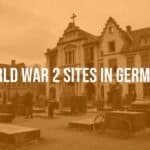
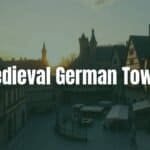
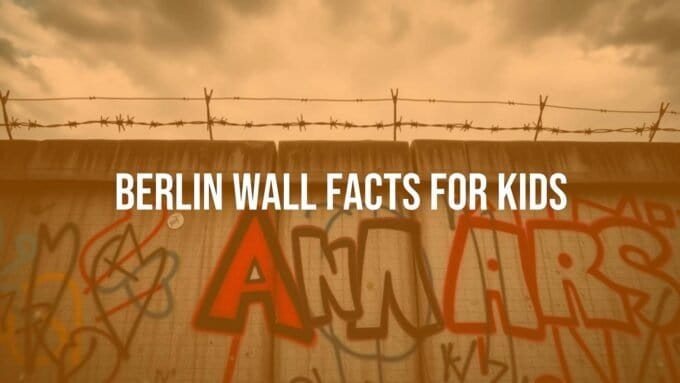
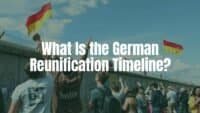



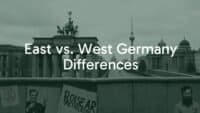

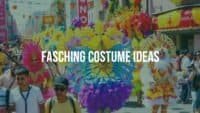
Leave a comment